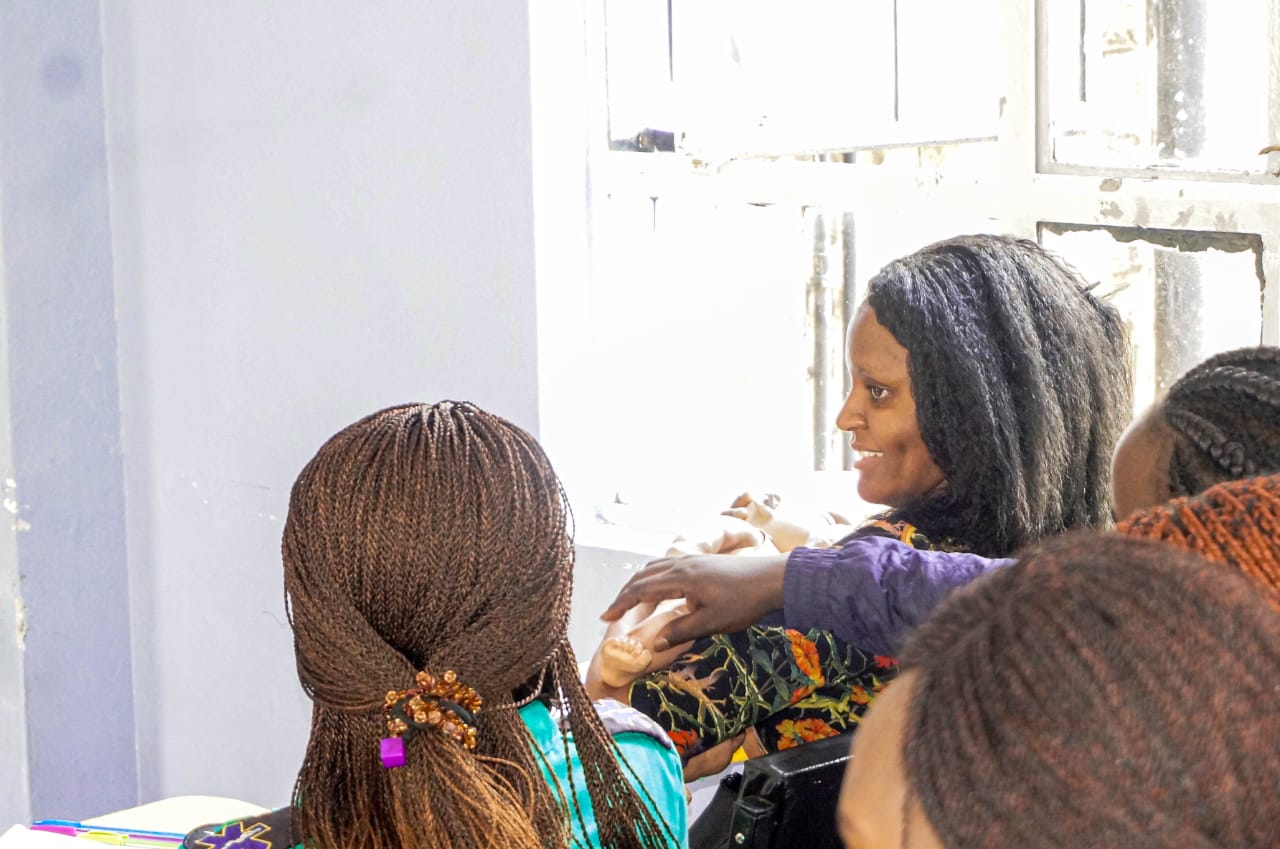- 0-4 minutes- Brain damage is unlikely
- 4-6 minutes- Brain damage possible
- 6-10 minutes- Brain damage likely
- 10+ minutes- probable brain death
- Coughing or gagging
- Difficulty in breathing
- Sudden inability to talk or cry
- Open the mouth while making funny sounds or no sound at all
- Hand signals and panic
- Wheezing
- Passing out
- Turning blue: You may notice this on the face, lips, finger nail indicating that oxygen is low I supply.
- Assess the situation quickly- If the baby has suddenly stopped crying or talking, it means that something has blocked the wind pipe. If the baby is coughing, it means that the airways are partially blocked. Encourage coughing as it will dislodge the solid out of the trachea.
- Back blows- The next step is try to dislodge the object- If two minutes have elapsed and the object is not coming out despite the coughing, you need to change tactics. The first thing you should do is to give the baby back blows. You need to sit, then place the baby on your arm facing the ground. Support the neck with your hand (between the thumb and the fingers-face down) and maintain the support. Lower you thigh such that the baby’s head is lower than the chest. Using the palm of your other hand, give five, firm and distinct blows on the space between the baby’s shoulders. The object may come out.
- Chest thrust- If the object does not come out, it’s time to do chest thrust. Carefully turn the baby over and use the thumb and fingers to hold the baby’s jaw with head lower than the chest. Using two fingers placed at the center of the baby's breastbone (imaginary line running through between the nipples), give five quick chest compressions. Be firm but gentle when doing the chest thrust.
- Repeat the process- If the object does not come out, repeat back blows and then alternate with chest thrust until the baby start coughing or the object dislodged.
- Open the baby’s mouth and try see if you can see the object. Remove it with your finger if you can. If you cannot see it, then don’t put your finger as you could push it further.
- Perform CPR- If the baby is unresponsive i.e the object is out but not breathing, try to do CPR. I will explain about this CPR in the next post. Like and follow me on Facebook not to miss this life saving first aid skill.
- Introduce solid foods at the recommended time- Please do not introduce anything solid before your baby is at least 4 months of age. In fact, wait till six months. Your baby has still not mastered the art of swallowing the food or even chewing to reduce the sizes
- Avoid high-risk food -Avoid hard foods. When you introduce solid foods, go for mushed food and purees and adjust as the baby grows. If you are opting for baby-led weaning, ensure that the food pieces are small and soft. Avoid seed like foods like nuts, popcorn, hard candy etc.
- Supervise meal time- This is my rule number 1 in when it comes to weaning. A baby must never eat alone. You can say that again. Please supervise your baby to ensure that you are there to observe in case of chocking. For alder babies, remind them to chew, to swallow and to avoid playing and talking too much while eating as this can cause chocking.
- Keep hazardous object out of reach- This means you ensure that the only thing that your baby can reach is bigger that his mouth can swallow. Carefully select the toys that they are playing with. Small toys like marbles, tiny building blocks are meant for older children. Avoid dropping any coin on the floor, pen caps or any object that a baby could attract the baby’s attention. This include telling your nanny these rules for the safety of your baby.

